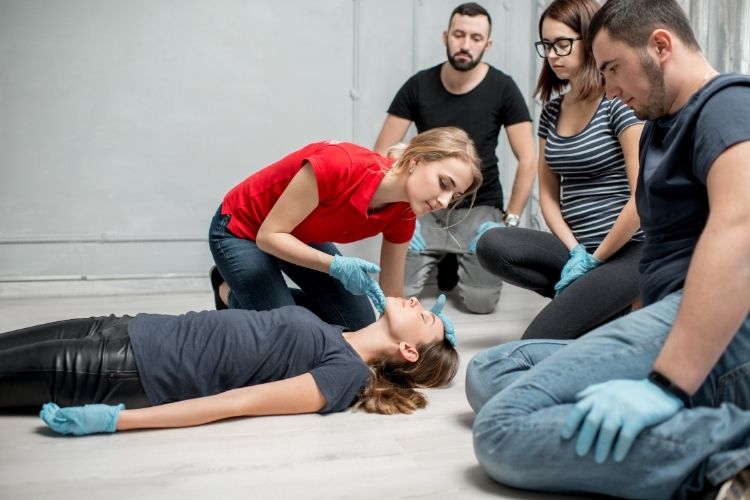Table of Contents
One subject that doesn’t get enough attention within the prepper community is medical treatment. People usually only think about food, water, self-defense, and other survival-related tasks – that is, until a medical emergency actually happens.
Our society has become dependent on medical professionals to administer care for injuries ranging from relatively minor medical problems to life-threatening conditions. But when the SHTF, you can’t depend on doctors or hospitals.
While it’s difficult and time-consuming to learn advanced medical techniques, everyone can learn basic first aid and survival medicine practices to treat minor to moderate injuries as they occur. A little bit of knowledge now could save you or your family member’s life in a future where doctors are no longer available.
To better understand what first aid is, let’s discuss what first aid is not.
What is First Aid?

First aid is not advanced medical treatment. Although having an understanding of advanced medical practices (like stitches and splinting fractures) is helpful, it is not required for most injuries. Even if an injury is beyond the scope of your training, first aid is still useful to prevent further damage while waiting for appropriate medical treatment.
If trained medical staff will not be arriving at all then you may be forced to switch roles and become a caregiver. During an emergency, however, this should not be your concern. Your concern should be stabilizing the patient and assessing immediate threats to their health.
Common situations where properly administering first aid could prevent further injury include:
Bleeding wounds and other lacerations – Depending on the severity of the bleeding and its location, applying firm pressure to the immediate area will aid in the clotting process. If the bleeding is arterial, then a tourniquet may be required to prevent life-threatening blood loss.
Nosebleeds – A nosebleed is very rarely a life-threatening ailment. The exception is when the patient is a hemophiliac (a “bleeder”); a person unable to clot damaged blood vessels. Typically, pinching the nose shut is all that’s required to stop a nosebleed.

Burns – Burns are categorized into first, second, or third degree classifications depending on the severity. First-degree burns typically do not require any special treatment while a third degree burn should be immediately wrapped to prevent the risk of serious infection. Burn creams do nothing for extremely severe burns and should be avoided.
Bites – Bee stings and spider bites are probably the most common biting injuries encountered during first aid treatment. These injuries are usually not serious but complications can arise because of allergic reactions. This condition is known as anaphylaxis and is deadly if left untreated. Snakebites can be more serious. The bite from a venomous snake can kill a human quickly. Wrapping the wound and keeping the patient relatively still will help to slow the spread of venom throughout the body.
Sudden collapse – A person may collapse for a number of reasons including respiratory distress, choking, or cardiac arrest among others. One of the staples of first aid treatment is commonly referred to as ABC – airway, breathing, and circulation. Assessing the ABCs of a patient can often shed light on the reasons for the collapse and appropriate action can be taken.
Car accidents – Any accident involving a vehicle can often result in serious injuries including injuries to the spinal column. These victims should not be moved until appropriate equipment is available to stabilize the spinal column. Many basic first aid techniques can be administered while the victim is still in the vehicle.
Frostbite and Hypothermia – Frostbite occurs when human tissue begins to freeze due to exposure in extremely cold temperatures. Extremities such as the fingers, toes, ears and nose are most susceptible to frostbite. Minor frostbite can be treated easily by gently soaking the affected area(s) in warm water. Do not use direct heat (from a fire or stove) as this can lead to burns. In more extreme cases of frostbite, there is little that can be done from a first aid perspective and depending on the severity of the condition, the affected areas may ultimately require amputation.

Hypothermia occurs when the body’s core temperature drops below 96°F. Symptoms of hypothermia include uncontrollable shivering, drowsiness, slurred speech and loss of coordination. These symptoms become increasingly obvious as the body continues to cool down.
Treating hypothermia is as simple as restoring the core body as quickly as possible. This can be done by placing the victim in a sleeping bag (or under a blanket) without clothing and having someone else (also naked) lay with the victim. It can take hours to raise the body temperature of someone suffering from hypothermia so be prepared to stay where you are for a long time while the victim recovers.
Frostbite and hypothermia are two of the most common injuries you are likely to encounter when administering survival medicine.
Severe Bleeding – When a victim is losing a lot of blood due to injury, quickly clean obvious dirt from the area and immediately apply direct pressure to the wound by placing sterile gauze over the area and pressing down as hard as possible. Depending on the extent of the injury, you may have to apply pressure for 30 minutes or more to control bleeding. If a major vein or artery has been opened, surgical scissors can be used to directly cut off blood supply to the affected area.
Do not put direct pressure onto the wound if an embedded object is present. Also, do not remove the embedded object as this usually causes even more bleeding. If a limb has been severely lacerated, you can also apply a tourniquet to the limb. Unfortunately, tourniquets often result in the amputation of an entire limb because the blood supply is almost entirely cut off during the process. Tourniquets should always be placed as close to the wound as possible for this reason and should only be considered when other options (namely direct pressure) haven’t been effective.
You should also look for signs of internal bleeding which could signal an even more serious injury. Signs of internal bleeding include:
- Bleeding from body orifices including the ears, mouth, nose or anus.
- Vomiting or coughing up blood
- Unusual bruising
- Tender or swollen stomach
- Cold, clammy skin
- Shock in the absence of more obvious injuries
This is only a small sampling of the thousands of possible injuries you may encounter but fortunately, the same principles apply whenever you are administering first aid. Primarily, these principles include keeping the victim calm and reasonably comfortable while assessing the injury and taking steps to prevent further damage or infection.
Must-Have First Aid Kit Items

The Basics
- First Aid reference manual
- Gloves
- CPR barrier
- Large cloth dressings
- Sterile gauze pads
- Roll bandages
- Compression bandages
- Band-Aids
- Butterfly bandages
- Medical tape
- Triangular bandages
- Q-tips
- Sharp scissors
- Wooden tongue depressors
- Tweezers
- Sewing needle
- Small flashlight
- Oral thermometer
- Irrigation syringe
- Splinting material
- Emergency blanket
- Instant hot/cold packs
- Plastic bags
- Eye solution
- Antibacterial soap
- Antiseptic solution
- Antibiotic ointment
- Hydrocortisone cream
- Burn gel
- Ibuprofen
- Antihistamine tablets
- QuikClot
- Hand sanitizer
- Superglue
This list represents the bare minimum that every kit should include. The next section represents items that are not necessary for basic first aid but could become invaluable in a more serious situation.
Useful Add-ons
- Burn kit
- Snakebite kit
- Israeli Battle Dressing
- Stethoscope
- Cervical collar
- Blood pressure cuff
- Sutures
- Locking forceps
- Automated External Defibrillator (AED)
- Scalpel
Next, we will look at some common medications that should be included in your first aid kit. Keep in mind that some of these medications are OTC like the ibuprofen already mentioned while others require a doctor’s prescription.
For prescription medications, many doctors are willing to prescribe extra medication for your first aid kit if you explain your intentions first. This will not include controlled substances such as opioid-based painkillers or other regulated medications.
- Asthma inhalers
- Nitroglycerin
- Aspirin
- Sugar pills
- Insulin
- Imodium
- EpiPen
You’ll want to include any specific medications required by you or your family in your kit as well.
You should also try to include a supply of common antibiotic medications like cephalexin, amoxicillin, and/or penicillin. In some cases, a doctor may be willing to prescribe small amounts of these antibiotics to you, but that’s not always the case.
Another option is to stock up on antibiotics marketed for use in aquariums. These medications are the exact same pills you would get from the pharmacy but because they are labeled “Not for Human Consumption” they can be sold online and in per stores without a prescription. They work just as well, come in the same doses as the prescription versions, and are completely legal to purchase.
It would be nearly impossible to prepare for every type of emergency medical situation you’re likely to encounter during a survival situation, but carrying the items listed above and more importantly, knowing how to use them, is the best way to protect yourself and your family when SHTF.

